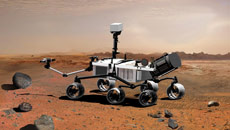The hard drives in your computer could get even smaller as scientists have now discovered a novel technique to understand better the new properties that arise when two materials are put together.
With a better understanding of how materials interface, scientists can tweak the properties of different materials more easily, and this opens doors to the development of better solar cells, novel superconductors and smaller hard drives.
Some of the most exciting condensed matter physics problems are found at the interfaces of dissimilar materials.
"If you put two materials together, you can create completely new properties,” said Andrivo Rusydi, an assistant professor at the National University of Singapore.
“For instance, two non-conducting, non-magnetic insulators can become conducting and in some cases ferromagnetic and superconducting at their interface," explained Rusydi.
But scientists didn't know what happened at the interface.
To resolve this long-standing mystery in the physics of condensed matter, the scientists investigated the interface between strontium titanate and lanthanum aluminate, two insulators that become conductors at their interface.
In doing this, the team uncovered another mystery.
"For this interface, a theory predicts that the conductivity should be tenfold higher than what is observed. So, 90 percent of the charge carriers - the electrons - are missing," said Rusydi.
To search for the missing electrons, the scientists employed high-energy reflectivity coupled with spectroscopic ellipsometry.
It was found that only about 10 percent of the expected electrons are free to migrate to the interface of the two materials to form a conduction band.
The remaining 90 percent are bound in the molecular lattice at higher energy states that were not visible to light sources used in earlier searches.
"It explains why more than just one layer is necessary to fully unfold the interface properties," Rusydi said.
"If only a part of the electrons migrate to the interface, you need a bigger volume to compensate for the symmetry breaking," Rusydi added.
The study appeared in the journal Nature Communication.






